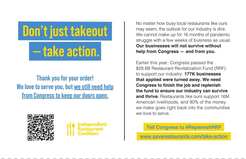 For many consumers, it can feel like life is returning to pre-pandemic times, complete with in-restaurant meals and holiday gatherings. But as we begin another winter with Covid hovering in the background, restaurant operators are still having to develop strategies for keeping business humming during uncertain times. Beyond efforts to make outdoor dining a comfortable reality, indoor dining well-ventilated, and off-premise sales seamless, the industry has also been pushing Congress to replenish the Restaurant Revitalization Fund. The effort has reached a critical point and the Independent Restaurant Coalition is urging operators to make noise in Congress right now by contacting representatives and encouraging restaurant patrons to get on board too. If you want to get involved but aren’t sure where to start, the coalition has developed some resources to help, including an outreach guide, which includes background about the fund and sample scripts that can be used as the basis for emails, calls and social media posts, as well as state-specific resources. If your loyal guests are willing to help you in the effort, here is a flyer you can share with them – it includes some information about the fund and how they can help spread the word on your behalf. 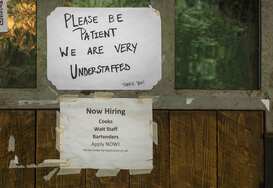 In a recent legislative update from Washington, Sean Kennedy, the National Restaurant Association’s executive vice president of public affairs, said the restaurant industry had lost 45,000 jobs at the end of August. Further, new vaccine and testing mandates at businesses with a certain threshold of employees on staff could also make already-challenging staffing conditions even more difficult. To be sure, this is not exactly the Covid-19 recovery that restaurant operators had in mind – but there are efforts underway to try and change that. Industry advocates are urging lawmakers to continue to replenish the Restaurant Revitalization Fund (RRF), though Kennedy says it appears that members of Congress don’t want to add any Covid-recovery measures to the $3.5 trillion infrastructure spending plan in process, which is focused largely on climate initiatives, paid leave, childcare, education and healthcare. Because funding the spending plan will impact businesses in the restaurant industry, however, Kennedy is urging operators to add their names to Restaurants Act, a grassroots organization for the restaurant industry that is looking to generate broad support from the restaurant industry in order to urge lawmakers to continue to fund the Restaurant Revitalization Fund. (The fund closed to new applicants in May and according to a recent announcement from the Independent Restaurant Coalition, 82 percent of independent restaurants are concerned they may close permanently if the fund is not replenished.) You can join or learn more about the effort to refill the fund at Restaurantsact.com.  Just weeks ago, it seemed like things were back on the upswing for restaurants. Consumers were eager for a return to eating out and anxiety about gathering indoors was waning across the country. But the rapid spread of the delta variant, and a range of state and local responses to it at both the government and consumer level, has added a new wrinkle to pandemic recovery. For restaurants in various parts of the country, this has meant an increase in no-shows, new rules about the need for vaccines, a lack of clarity on the wearing of masks and Covid-related backlash from the public on restaurant review sites. Communication – to your staff and to your guests – is critical right now. Determine what guidelines you must follow to protect the safety of all, then find friendly, non-confrontational, non-political ways of sharing your approach. Continue to offer multiple options for dining and collecting orders. Expect requests for outdoor dining to continue – and prepare now for accommodating guests outdoors into the cooler months. Consider what to do about no-shows – whether it be charging a deposit on a table or asking for a text or email confirmation of a reservation. Update signage on your entrance, website and social media channels with your approach, indicate that it will likely be changing in the coming weeks, and ask for everyone’s patience as you work hard to keep business going in challenging times.  As much as we all hoped and expected this summer would represent a return to pre-pandemic gathering and eating out, the delta variant has had other plans in store for many parts of the country. Restaurant operators, again, have been put in the challenging position of having to be enforcers of ever-fluctuating state and local regulations – all while continuing to juggle ongoing labor and supply shortages. If you haven’t already, it’s a good time to take a look back at your early-pandemic playbook and identify income streams that might help you weather the current challenges. That could mean posting new products for sale on your website, offering cocktails to-go if allowed in your state, and promoting family-style meal packages for guests who crave your food but aren’t yet comfortable eating out. Consider how your restaurant might adapt to the current situation of local consumers – whether that be a continuation of working from home or the beginning of hybrid work. Try to create stability, wherever possible, for both guests and staff. That could involve sticking with delivery and takeout service only (at least for the time being) or operating on a limited but set schedule. While it may feel like you’re missing opportunities to generate sales, guests and employees alike are likely to value predictability. Your loyalty program may help you here too. Do you want to boost visits on particular days and times? Increase your carry-out business while dine-in business is uncertain? Consider how you can incentivize your most loyal guests to help you keep business humming. The ghost kitchen segment has plenty of room to grow, with less than 5 percent of restaurants adding delivery from ghost kitchens as an option during the pandemic. These kitchens also boast a range of potential benefits, ranging from improved scalability to decreased overhead costs. After a year in which restaurant operators have been forced to pivot on a daily basis in order to survive, ghost kitchens have become the poster children of flexibility, allowing operators to churn out a rotating range of menu options – often items rarely seen together on a menu – in response to consumer whims. Operators are also uncovering new and often cost-effective places to open ghost kitchens, from college campuses to hotels to really any centrally located space that has a professional kitchen. But just as the pandemic has required the restaurant industry to be flexible in its accommodation of off-premise orders, coming out of the pandemic may require a different kind of flexibility. As this Grub Street report explains, a lot of the magic of eating in restaurants (and the improved quality of the food experienced on-site) just can’t be replicated by the ghosts. While consumers crave convenience, they also appreciate a special experience – communing with others and trying foods they wouldn’t have otherwise considered, which is generally more likely to occur onsite. That may be especially true as people look to make up for lost time after a year spent close to home and away from gatherings (according to a new report from Paytronix and PYMNTS, more than two-thirds of the restaurant food ordered last year was eaten at home). So going forward, whether you’re considering new real estate, kitchen equipment or ingredients, look for flexibility: As you shift your operations to support off-premise sales, consider the potential that you might want to shift back.
Like constant change? Probably not. Even for those who are more comfortable with change, the past year has likely forced too much of it. But what if you could adjust your mindset and your business so that you could better weather, anticipate and (perhaps) even welcome change? A September TD Bank survey of 250 restaurant operators around the U.S. aimed to take the pulse of the industry and find out what strategies have worked for restaurants that have managed to succeed in such a tumultuous year. Three key findings emerged: Off-premise sales are critical and restaurants need to be able to accommodate them (particularly via such consumer conveniences as mobile ordering and delivery). Payment methods including mobile, online and contactless are helping restaurants encourage consumer confidence. Finally, many of the traditional physical characteristics of restaurants are changing to accommodate drive-thrus and pick-up areas, shift to ghost-kitchen formats and decrease overall footprints. So how can this information help restaurants set themselves in a more powerful, less reactionary position for the future? First, scrutinize your off-premise menu and sales to ensure they are practical and profitable. Then adjust. Get comfortable trying new ideas regularly – it will not only help you see what works and what doesn’t, but it will also give you something new to promote to customers. Next, evaluate your payment methods: Do they help you limit face-to-face interactions with customers and also enable you to expedite payment and get a faster, clearer picture of your sales? Finally, take advantage of this time of disruption. Look for new partners and investors, and talk to bankers, landlords and suppliers to identify opportunities to secure more beneficial arrangements.
Restaurant operators are natural creatives, but who would have thought that the past year would have required so much creativity – less for planning special events and more for just figuring out how to keep business afloat? The past year has hit caterers especially hard – and required near-constant reinvention across the hospitality sector. As we emerge from the pandemic, it’s likely that restaurant operators will continue to need new operating models and diverse streams of income to fortify themselves going forward. How can you make your business as nimble and adaptable as possible for the long haul? It might involve converting or scaling down your existing real estate for new purposes. Perhaps you can convert your food truck into a door-to-door meal delivery service. Or your former events business into a smaller specialty meal-and-dessert service for virtual meetups. Have a team with big personality and ideas? Create a series of YouTube videos that feature them showing viewers how to throw a festive dinner party at home – and offer a corresponding dinner-and-wine kit available for purchase. Becoming a more nimble operation may involve simply adopting technology to help fine-tune your inventory management, minimize waste and manage labor. Returning to business as usual shouldn’t be a long-term plan for any restaurant business, so what incremental changes can your business make this year to create new revenue streams and cushion against future challenges?
“I don’t have restaurants anymore; I have websites.” That’s what Mike Friedman, chef at the Washington, D.C. Italian restaurant Red Hen, told Eater recently. Last summer, Friedman and his partners at Red Hen and two additional restaurants didn’t feel safe bringing guests back indoors to dine – even when it was allowed – and they instead reinvented their business model to fit the times. That has meant making food that practically generates its own online content. On a rotating basis, the partners launch new pop-up concepts around different regions of Italy and offer food and wine from that region for takeout and delivery. The regularly changing pop-ups create new content for their social media and email newsletter. (What guest wouldn’t want to check out how they are integrating Sicilian citrus into their menu or what red wine will be paired with their Tuscan-themed pop-up?) In the current environment when guests aren’t coming to dine inside your restaurant, can you flip the script and make your website, social media and newsletter create the kind of vibe and excitement around your food that you once thought could only be experienced onsite? The benefits of rotating pop-ups include being able to use a simple, scaled-down menu for a set period of time, having ongoing reasons to get in touch with your customers and promote what you’re doing on a regular basis, and securing a steady stream of customers. You can entice customers with new options – and convince them to order from you now, before their current favorites rotate off the menu.
At the time of this writing, the National Restaurant Association had just announced that more than 110,000 restaurants around the country – representing one in six dining establishments – had closed either long term or permanently due to the pandemic. If you’re reading this, your business has likely already developed strong survival strategies, but the winter months are likely to test them yet again as the country manages winter illness spikes and more potential lockdowns. Is your restaurant as ready as it can be? In a recent Restaurant Dive article, several attorneys from the global law firm Goodwin’s financial restructuring group offered guidance to help restaurants weather the challenges of the next few months. Specifically, they said restaurants have two critical capabilities now: their ability to identify and implement practices to enhance revenue and reduce expenses, as well as their ability to connect with stakeholders and create a mutually agreed-upon restructuring plan that maximizes the value of the business and develops a business model that is sustainable in the current environment. As part of this, restaurant operators will need to conduct a thorough analysis of their operations, including calculating all assets and liabilities, and consider potential opportunities for getting concessions from landlords and suppliers, as well as securing external sources of funding. While there are sure to be more restaurant closures ahead before this crisis is over, there will also be opportunities available. Savvy businesses that have a precise understanding of their operation, as well as contingency plans in place to provide help in various scenarios, will be in the best position to seize those opportunities.
This year, consumers and restaurants alike could really use the morale boost that holiday gatherings and celebrations can offer – but those events will look a lot different this year (if they happen at all). But not so fast. Could you find a festive way to help people enjoy great company, food and drink in a new way? Could you still help them toast to a long-awaited 2021? Think about how you can bring the party to your guests individually or virtually. Are there businesses in your neighborhood who have always held their holiday lunches and happy hours with you but will miss them this year because their employees are working remotely right now? More than ever, they want to make their employees feel appreciated and connected to their work from afar, so promote some holiday bundles that can be delivered to individual employees as a special treat. Do your customers still feel the need for a party – even if it’s not a traditional one? If you don’t have access to a large outdoor space where you are allowed to plan a socially distanced gathering, don’t underestimate the appeal of a virtual party, cooking class, quiz night or wine tasting held via Zoom. It can come together with a menu of festive food, cocktails and party bags for delivery, a few festive or funny Zoom backgrounds and some music.
|
Subscribe to our newsletterArchives
April 2024
Categories
All
|
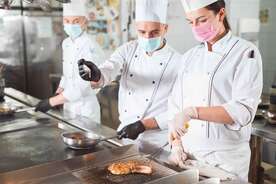

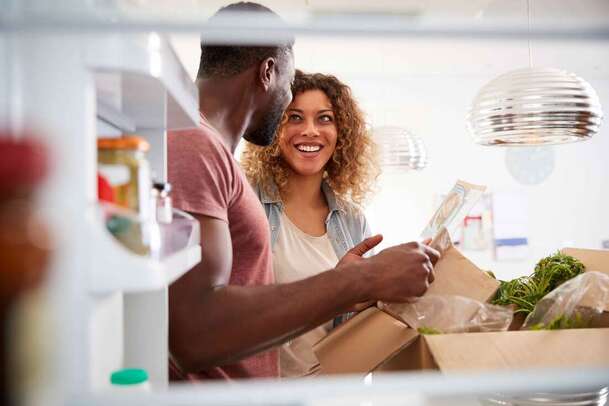

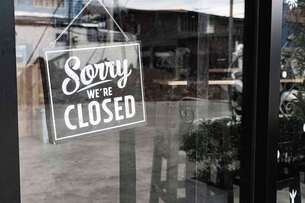
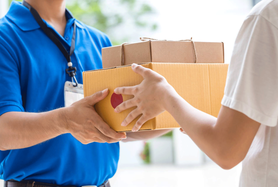

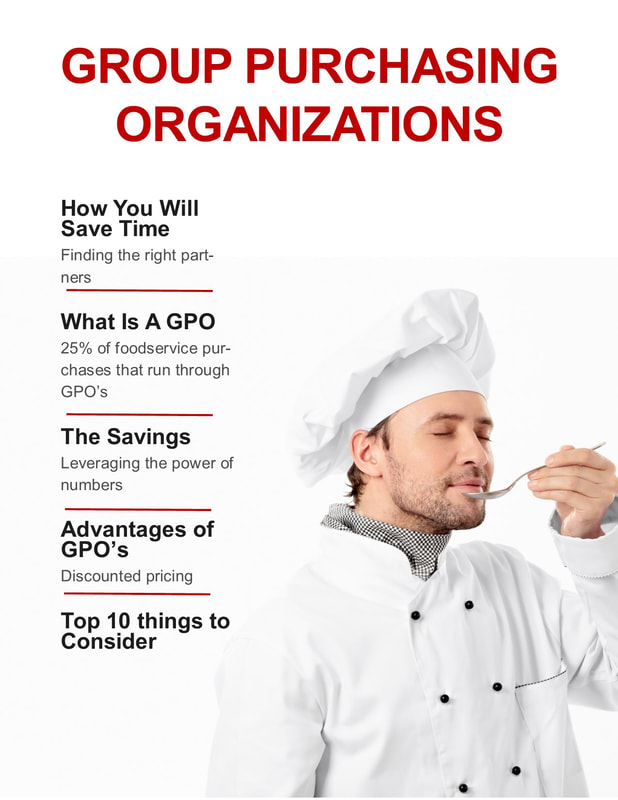

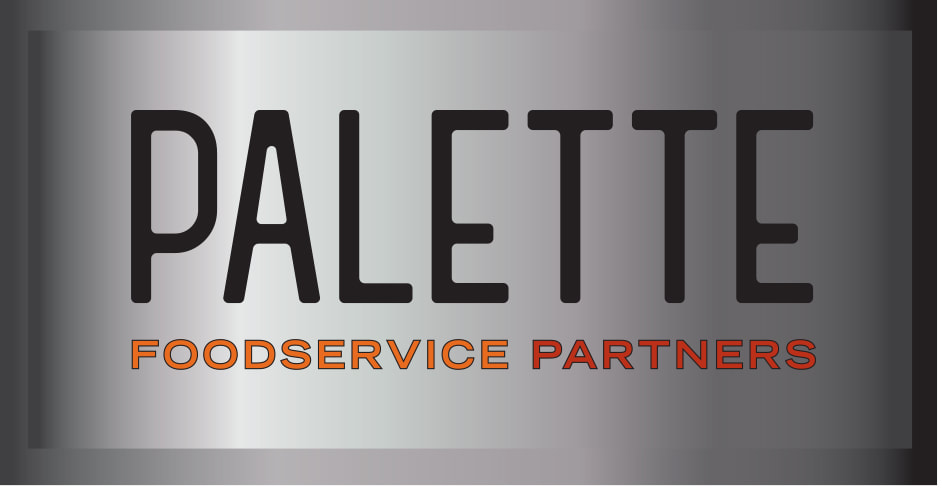
 RSS Feed
RSS Feed